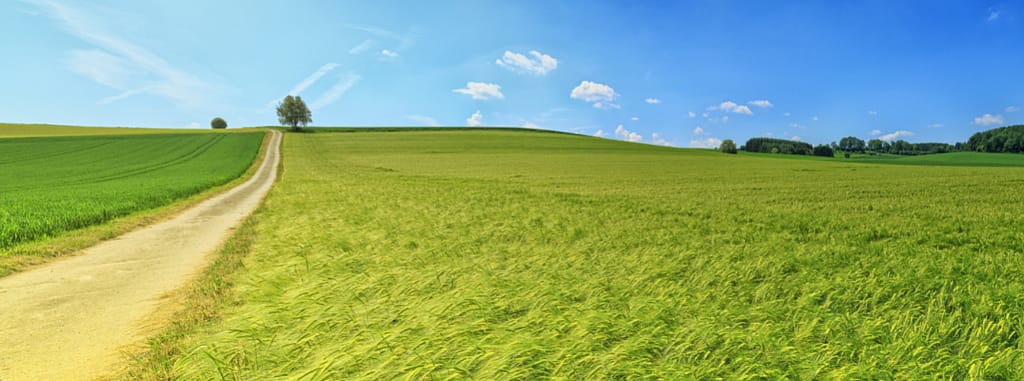Hydroponics is taking a root in Africa and this is exciting news. This is considered by authorities as the solution to food security problems in the sub-continent. Hydroponics is the new eco-friendly, next-gen farming method that does not need heavy nutrient solutions, fertilizers, or harmful chemicals to grow plants. The plants in these systems take up liquid nutrient solutions and the roots don’t have to go through any struggle to find the nutrients needed hence, the crop growth rate is faster than any traditional farming method. This is also considered as one of the most sustainable farming methods because their unit systems can be built/setup in closer proximity to the cities.
Around 70% of the world’s accessible freshwater is used in Agriculture. More than 50% of this is wasted in cultivation, leaky irrigation systems, environmental factors, etc. Hydroponic crops use up to 90% less water and 50% less area and produce a minimum of four times the yield for the same crop. Till 1936, hydroponics was practiced primarily in labs to research plant growth and study the root development. But now, even in East Africa with years of experience, Hydroponics is making its way into this method of farming. African hydroponic manufacturers are specialized in the installation and marketing of customized smart hydroponics systems to help small and medium-scale farmers have access to high quality, cost-efficient and sustainable way of farming.
Considering the current drought in the Western Cape and other parts of South Africa, you may say it is a forced shift. But it does bode well for the environment and our scarcest resource on planet earth – water. We have seen significant growth in hydroponic crop production from South African urban farmers, enthusiasts, small-scale farmers in cities and commercial farmers searching for alternative methods of farming to meet the demand for higher yield and the consumers’ concern for the environment.
The urban farmers and the hydroponic enthusiasts in South Africa now are able to contribute to food security through the ‘KHULA’ farmers App (meaning GROW) which allows farmers to list their products and track real-time inventory levels from emerging farmers as well as basic production forecasting. The App also includes a crowd-sourcing marketplace where farmers can satisfy market demand and incoming orders.P
There are many success stories coming out of the African hydroponics market. Peter Chege Gichuku, the founder of an agricultural farm in Kenya, adopted Hydroponics in 2013. He built hydroponic systems that would grow quality animal fodder for farmers at a cheaper cost. His company, Hydroponics Africa Limited has so far installed over 3,500 hydroponics units to small-scale farmers, 65% of them being in dry regions where there is a scarcity of water and rich soil; making this method more viable for the local people. They have also installed widely in Kenya, Rwanda, Somalia, Tanzania, and Uganda and have in effect trained over 5000 farmers.
Kenya Climate Ventures (KCV) which is an independent part of Kenya Climate Innovation Center (KCIC) has invested $350,000 in Chege’s Hydroponics Africa as a convertible loan. The funds will be used for product standardization to ensure stable consumer product as well as, achieve operational efficiencies by decreasing costs, implementation of a consumer finance strategy that will increase sales and amp up the revenue growth. It will also reach the distribution network to improve, analyze new markets, foreign expansion strategy to grow organically or establish joint-venture and licensing arrangements.
They have also received an endowment from VIA Water of 117,000 Euros for a pilot on hydroponics in Rwanda and a $500,000 grant from Securing Water for Food (SWFF) to support 4,000 households with a vertical hydroponic system. Vertical farms use high tech lighting and climate controlled panels to grow crops like leafy greens (lettuce) or herbs indoors while using less water (as mist) and soil. Because it’s a closed growing system, with controlled evaporation from plants, these farms use 95% less water than any other traditional farms.
Africa is urbanizing at a very fast rate. According to World Economic Forum, by 2050, more than 70% of its population is expected to live in the cities. Many of these urban consumers are willing to spend more to buy high quality, pesticide-free food. Despite the factors that have fuelled the vertical farming movement, Africa is yet to see a massive boom in this industry. But it is definitely coming up.
In order to further facilitate growth in organic farming in Africa, there have to be infrastructural and financial improvements in the market. There are quite a few barriers in vertical farming methods like huge initial financial investments (1 million kilos of produce per year can cost up to $80 to $100 million), unreliable frequent power cuts, etc. Hence, economical and more consistent forms of energy like solar energy are being seen as the driving force of the current growth.
Author Bio –
Alex Curtis is a Hydroponics farmer and a researcher in urban farming solutions. He is particularly involved in working on cost-effective hydroponic systems that can be adopted by small and medium-scale farmers. Visit his website Herboponics for latest hydroponic content.

